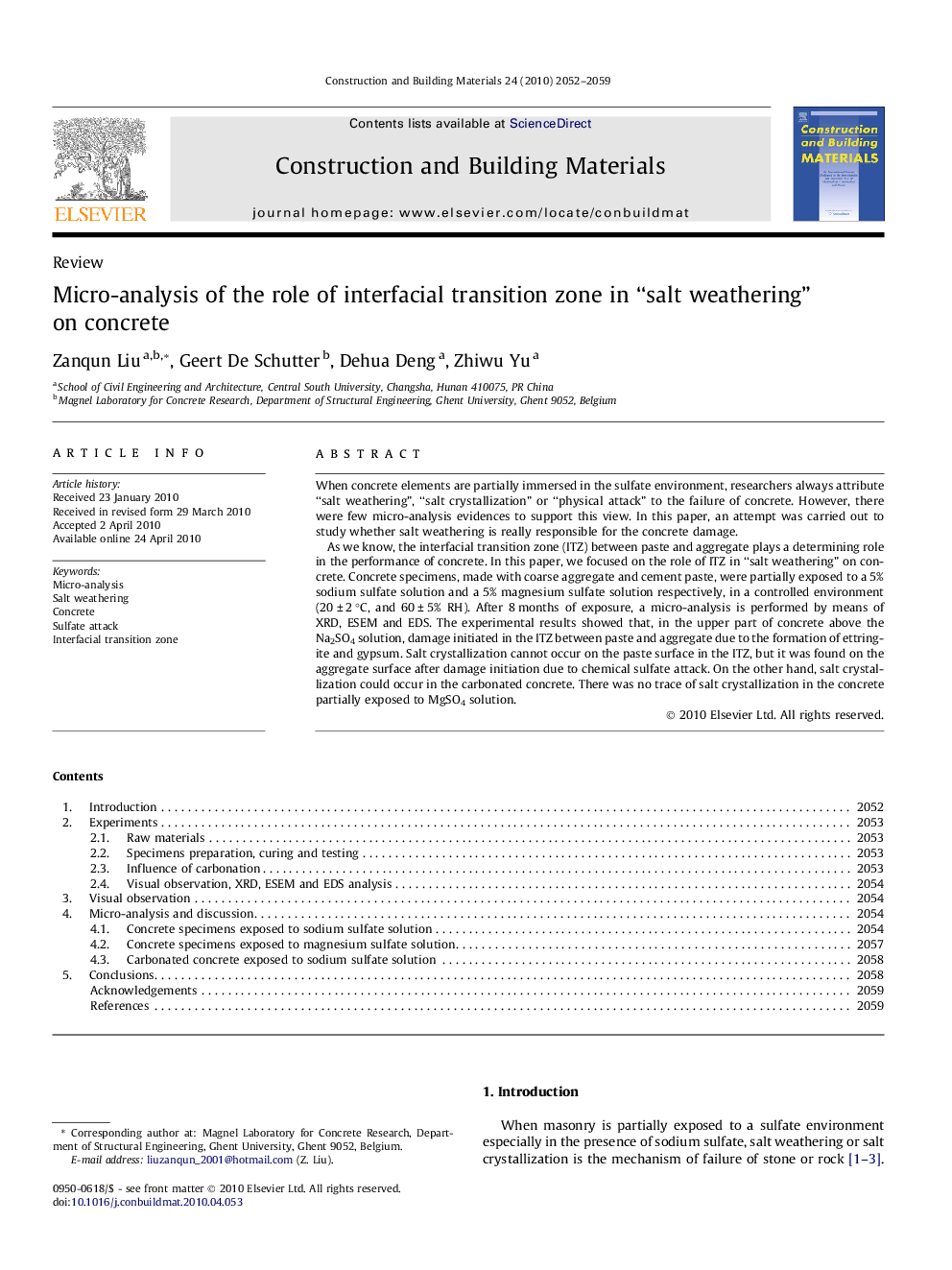| Article ID | Journal | Published Year | Pages | File Type |
|---|---|---|---|---|
| 259867 | Construction and Building Materials | 2010 | 8 Pages |
When concrete elements are partially immersed in the sulfate environment, researchers always attribute “salt weathering”, “salt crystallization” or “physical attack” to the failure of concrete. However, there were few micro-analysis evidences to support this view. In this paper, an attempt was carried out to study whether salt weathering is really responsible for the concrete damage.As we know, the interfacial transition zone (ITZ) between paste and aggregate plays a determining role in the performance of concrete. In this paper, we focused on the role of ITZ in “salt weathering” on concrete. Concrete specimens, made with coarse aggregate and cement paste, were partially exposed to a 5% sodium sulfate solution and a 5% magnesium sulfate solution respectively, in a controlled environment (20 ± 2 °C, and 60 ± 5% RH). After 8 months of exposure, a micro-analysis is performed by means of XRD, ESEM and EDS. The experimental results showed that, in the upper part of concrete above the Na2SO4 solution, damage initiated in the ITZ between paste and aggregate due to the formation of ettringite and gypsum. Salt crystallization cannot occur on the paste surface in the ITZ, but it was found on the aggregate surface after damage initiation due to chemical sulfate attack. On the other hand, salt crystallization could occur in the carbonated concrete. There was no trace of salt crystallization in the concrete partially exposed to MgSO4 solution.
